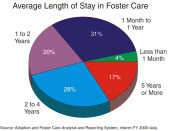University of PhoenixEmployment LawMGT 434Jul 12, 2007In the past most women were homemakers and if someone in the family was sick the lady of the house would take care of them. If she had a baby, she was able to stay home and recuperate and care for the newborn. Now that most women work outside of the home if someone in the family is sick she has to stay at home to care for the sick family member instead of going to work. If she is married the couple has to decide which one of them is going to take off work at the risk of losing their job. If an employee has a child with a lengthy illness he or she may have to take so much time off that her she may lose her job, benefits or both. If an employee adopts or gives birth to a baby she usually only gets six weeks off work from work and the father doesnÃÂt get anytime off.
The government believed that something had to be done to help families who find themselves in one of these situations.
On February 5, 1993 the Family and Medical Leave Act (FMLA) was signed into law by President Bill Clinton. Now employers must allow employees time off from work if he or she is seriously ill, has a new baby or has recently adopted a child or children, or who have to take care of sick family members without the risk of the employee losing his or her job. Sections 6381 through 6387 of title 5, United States Code, as added by Title II of the Family and Medical Leave Act 1993, provides that employees who qualify can receive up to 12 weeks of time off from work without pay during any 12-month period.


